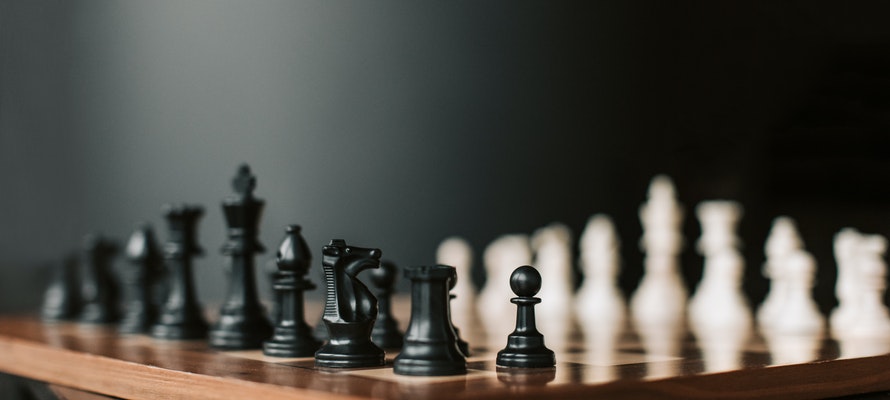Kids Games: A Guide to Playing Chess
Chess is popular with kids and adults alike. Everyone has probably seen a chessboard. It's a flat board that has eight columns and eight rows painted on it, making for a total of 64 squares in alternating colors. The squares are usually black and white. The pieces are also usually black and white. Chess is played between two players, one playing the black pieces and one the right. The goal of the game is to trap, or checkmate, the other player's king. Checkmate happens when the king cannot move without being captured by one of the opposing player's pieces.

History of Chess
Chess dates all the way back to the 6th century, when it was invented in India during the Gupta Empire. Back then, the game was known as chaturanga.
- When the Silk Road emerged between Europe and Asia, the game of chess began to be played in the Western Hemisphere.
- Chess was used as a way to teach war strategy to soldiers during the Middle Ages and into the Renaissance.
- Beginning in the Age of Enlightenment, chess was seen as a way for players to improve their concentration and intelligence.
Chessboard Setup
Each of the two chess players has 16 chess pieces. These pieces are placed on the board in certain positions.
- Horizontal rows on a chessboard are known as ranks, and vertical rows are known as files.
- The castles (or rooks) are placed on the outer right and left corners of the board.
- Knights are placed next to the rooks.
- Bishops go next to the rooks.
- The queen has to go on a square that matches her color: The black queen will be on a black square and the white queen on a white square.
- The king goes directly next to the queen.
- The pawns are placed in the row in front of the other pieces.
How to Play: The Basics
Chess can seem like a very hard game to learn. However, there are very clear rules, and once they are learned, the game begins to make sense!
- The king can move in any direction, one square at a time. However, it can't move into a square that's under threat by an opponent's piece.
- The queen can also move in any direction but can move as many squares at one time as the player wishes. The queen is the most powerful piece on the chessboard.
- The bishop only moves diagonally but can move any number of squares in a single turn.
- The knight moves in an L shape, two squares in one direction and one square at a right angle. The knight can jump over any pieces in its path.
- The rook, or castle, can move backward, forward, or sideways any number of squares.
- The pawns can move two squares going forward on the opening chess move. Afterward, a pawn only moves one square forward on each turn unless it is capturing one of the opponent's pieces, in which case it moves one square diagonally.
How to Begin a Chess Game
Knowing how to start a game is important. The strategy behind chess begins before the first player makes a move as each player decides how they'd like to move around the board.
- The first moves by each player are called the opening moves.
- It's important to get control over part of the board early in the game.
- Controlling the center of the board is a great strategy.
- As the game begins, players should protect their king while capturing as many of their opponent's pieces as they can.
How a Chess Game Ends
A game ends in one of three ways. Some games have a clear winner, but there are two other ways chess games can also end.
- Checkmate happens when a player's king can't escape capture on the next turn. The player whose king is trapped loses.
- One player can resign at any time. The player who quits loses.
- A draw is the final way a chess game can end. Draws happen when neither player can checkmate the other. These games are recorded as ties. Sometimes, a draw is called when after 50 moves by each player, no one has captured an opponent's piece.
Benefits of Playing Chess
Just like kids' bodies need to move to develop strong muscles, kids' brains also need exercise! Chess is great at helping kids learn to use their minds in new ways.
- Studies indicate that playing chess leads to higher IQs in children.
- It helps kids learn how to improve their focus and concentration skills.
- It also teaches kids how to plan and strategize, which are important skills for school and life.
- Chess uses the right and left sides of the brain because the game requires kids to think both strategically and creatively.
- Kids who play chess have better decision-making abilities.
- Chess improves the reading and math skills of kids who play.
Additional Resources
- Chess Kid
- EZChess
- How to Move the Pieces
- Learn Chess by Playing
- Master Chess
- How to Play Chess: The Ultimate Beginner Guide
- How to Play Chess for Beginners: Setup, Moves, and Basic Rules Explained
- Chess Strategy 101: Getting Started for Beginners
- Beginner Chess Strategy: Five Must-Know Tips
- Free Chess Course for Beginners
- Understanding the Basics of Chess Openings
- Should Every Child Be Made to Play Chess?
- The Brainy Benefits of Chess
- All About Chess and Why it's Good for Kids
- How to Teach Your Kids to Play Chess
- Benefits of Chess
- Chess Makes Kids Smarter
- The Lessons Chess Can Teach Your Children
=================================================================================================
Find more about the author: Kim Hart

